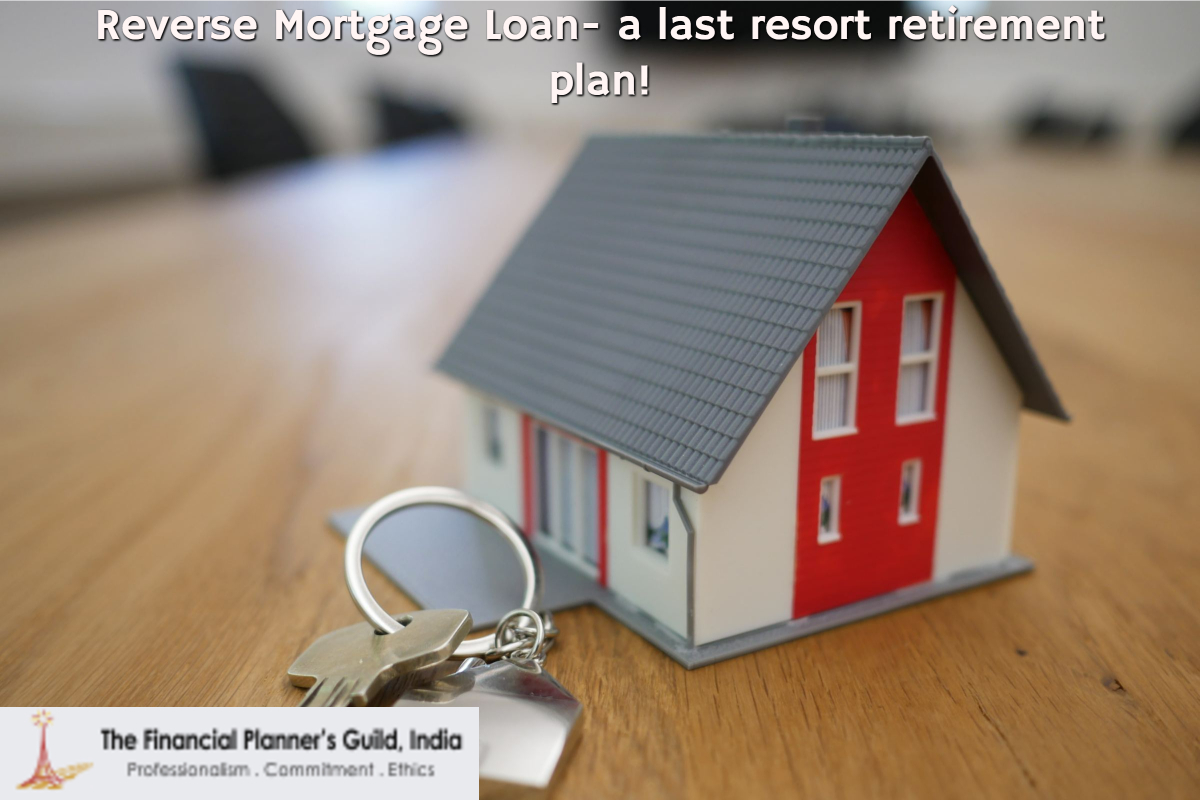
We need to understand that we have limited resources and surpluses available month after month but our goals are multiple. We try to achieve our major financial goals of education, marriage, home, car etc. in the life with them. Whenever we find there is not enough surpluses and is not possible to fund other major goals, we mostly compromise on them without looking at other options available. Most start planning for their retirement only in the last few years when either the required corpus is huge and the available funds are not sufficient to achieve the desired retirement fund. A reverse mortgage on your main house is one way to have a steady stream of income and continue to maintain your life style. Normally self occupied house is taken as personal asset and is not allocated to other goals while carrying out financial planning. But, in rare case when it is difficult to fund retirement fully, you have to opt for reverse mortgage after retirement when there is no other alternative is left.
Reverse Mortgage Loan (RML)
This scheme, after its introduction via Budget 2007-08, is being regulated by National Housing Bank which plays the role of regulator as well as instructor by issuing continous guidelines to the Primary Lending Institutions (PLIs) who are the service providers. The scheme is framed to help the senior citizens who own home but find it difficult to meet day to day household expenses of the family.
To put it simply, a Reverse Mortgage is the exact opposite of standard home loan . In a home loan, you borrow lump sum funds to buy house and repay the lender on a monthly basis in the form of EMIs. Here, instead of taking a loan to buy and paying EMIs to the bank/ financial institution, you are receiving EMIs, and the bank is buying your home from you.
A Reverse mortgage will, therefore enable you as a senior citizen of India above 60 years age or married couple as joint borrowers provided at least one should be above 60 years and the other should not below 55 years, to get a regular flow of income from the lender (the bank or financial institution) against your home. Residual life of the property should be at least 20 years and the property title should be free of any encumbrances. The revaluation of property is required to be done once every 5 years
You as the borrower, will continue to live in your home till end of your life and you will receive regular payments from the lender up to maximum disbursement period is 15 to 20 years with the maximum loan receivable in the range between 45% to 60% of the market value of your home. Present rate of interest is between 11% to 12 % p.a. depending on the bank. Your ownership, or equity, in your own home, decreases with every months payment the bank makes to you. Effectively, the bank is, little by little, buying your home from you.
Settlement of Loan
You can pre-pay the loan at any time during the loan tenure either by selling the property or when the last surviving lender dies and there is no pre payment penalty for such prepayment. Upon the property’s owner and spouse death or if you choose to move out of the property, the bank can sell the property to recover its loan amount. At the time of settlement, the first offer to buy the home is given to your next kin. If they wish, they can buy the home by simply repaying the loan amount.
Usually when the property is sold for more than the loan amount (which will likely be the case), then the surplus amount over and above the loan amount is paid to you/ your legal heirs/ next of kin and will be liable to pay the capital gain tax as the case may be. However, the amount received through reverse mortgage is considered as loan and not income; hence the same will not attract any tax liability.
If the sale amount of the home loan is lower than the initial loan amount then whatever loss is there, is borne by the bank/ financial institution itself.
Refrain from RML
Despite being such a lucrative and beneficial scheme, not many senior citizens have opted for RML-in India. The reason for the model not taking off include emotional attachment with one’s house, real estate correction, absence of clear guidelines against legal complications and inadequate marketing by the PLIs.
Conclusion
Though, reverse mortgage can really be a last resort of retirement plan for you to maintain the standard of living when you do not have other source of income. It should not be the primary tool to fund one’s retirement expenses. It should also not be used to fund the shortfall in the retirement income if any. There are many old people, who have assets of high worth, but they do not have a proper steady stream of income or their kids are either settled abroad and not interested in coming back. One can use reverse mortgage in that case.
FPG India ©2024. All Rights Reserved.
Designed & Developed by W3M Technoz